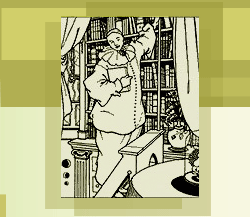Vadim Ustyuzhanin
 1,
Ilya Medvedev
2,
Andrey Ufimtsev
1,
Ilya Medvedev
2,
Andrey Ufimtsev
 1,
Leonid Grinin
1,
Andrey Korotayev
1
1,
Leonid Grinin
1,
Andrey Korotayev
1
Factors of Nonviolent Revolutions’ Onset: a Comprehensive Analysis
2025,
vol. 24,
No. 1,
pp. 71–105
[issue contents]
One of the most important trends noted by researchers in the revolutionary events of recent decades is the rapid increase in the share of unarmed revolutionary uprisings and, accordingly, a decrease in the share of armed revolutionary insurgencies. The study of this trend is of great importance. This work continues previous research on unarmed revolutionary destabilization. Unlike in past studies, the authors here have significantly expanded the time range taken into account, considered together the main factors in the onset of unarmed (~ “nonviolent”) revolutionary uprisings, and significantly improved the methodology by combining these factors within one model. As a result, the study found that most variables are related to the probability of an onset of unarmed revolutions in a curvilinear manner, which explains the weak statistical relationship for some variables in the works of predecessors. The following have a non-linear relationship: the duration of the regime’s existence, economic growth, the level of democracy, the degree of corruption within the regime, urbanization, GDP per capita, the “youth bulge”, oil production, levels of discrimination. In addition, the key determinants of the onset of unarmed revolutionary uprisings were identified and ranked in order of their importance. The analysis performed allows us to assume that the onset of unarmed revolutionary uprisings is most likely in upper middle income states with young political regimes, high populations, very low (as well as very high) rates of economic growth, intermediate political regimes (partial democracy or, especially, partial autocracy), a high level of corruption of the regime (despite the fact that an extremely high level of corruption still has a rather inhibiting effect on the likelihood of an unarmed revolution onset), significant financial assistance from the United States, a fairly high level of coverage of population with modern formal education, a very long incumbent duration, a fairly high proportion of urban residents in the total population, the presence of a certain culture of protest, as well as low or no oil income. At the same time, it is confirmed that the likelihood of the outbreak of unarmed revolutions has increased markedly after the end of the Cold War due to changes in the global geopolitical situation.
Keywords:
unarmed revolutions;
revolutions;
nonviolent protests;
cross-national studies;
factors of instability;
quantitative analysis;
machine learning
Citation:
Ustyuzhanin V., Medvedev I., Ufimtsev A., Grinin L., Korotayev A. (2025) Faktory nachala nevooruzhennykh revolyutsionnykh vystupleniy: opyt kompleksnogo analiza [Factors of Nonviolent Revolutions’ Onset: a Comprehensive Analysis]. The Russian Sociological Review, vol. 24, no 1, pp. 71-105 (in Russian)



.png)


 ©
© 